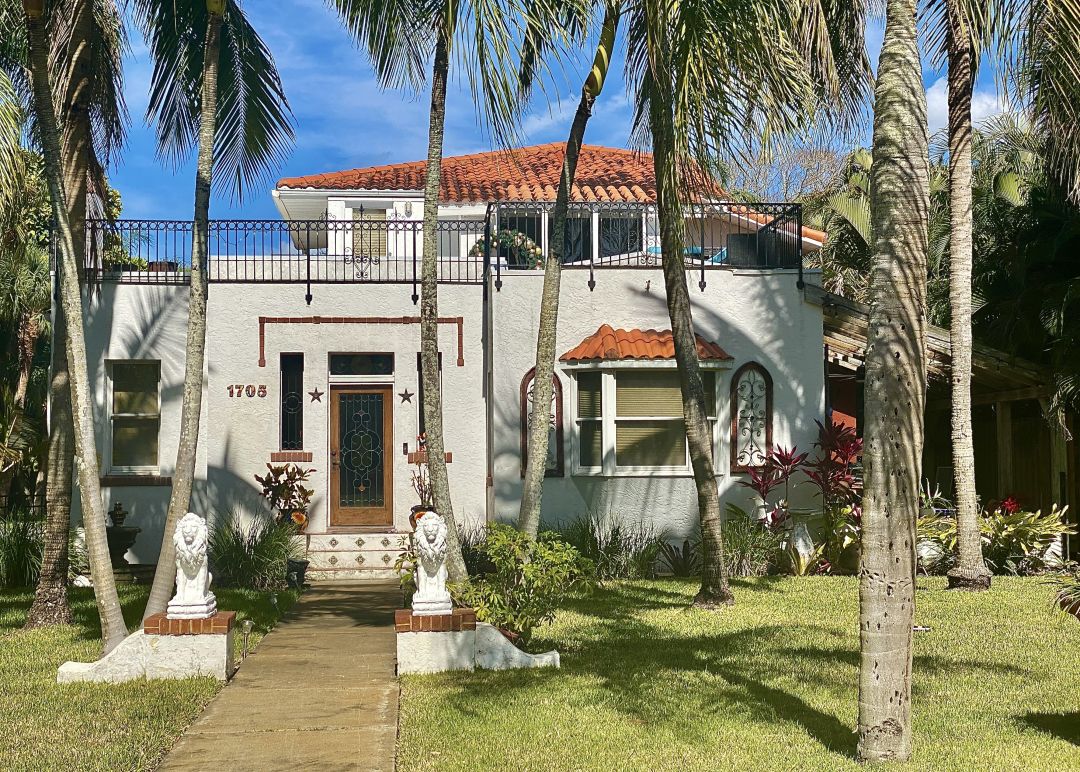A New Program Seeks to Save Sarasota's Historic Homes and Buildings Forever

A historic home on Vamo Drive in south Sarasota.
Image: Kim Doleatto
The Palm Apartments, El Vernona Hotel and the McClellan Park School—they're just a few examples of historically significant buildings in Sarasota that could have been saved from the wrecking ball that sought the valuable land on which they stood for bigger bucks and buildings if the right protections had been in place.
Now, a new easement program recently launched by the Sarasota Alliance for Historic Preservation (SAHP) makes that scenario possible. Fashioned after models long-used in other cities known for their historic charm, like Savannah, Georgia, and Charleston, South Carolina, the easement allows property owners to permanently protect their significant historic buildings.
“It's not a local government program. It's more on the private side of things,” says Lorrie Muldowney, president of SAHP.
The preservation easement is a layer of protection that goes beyond local or national historic designation. Those designations merely add some extra hoops, like time and money, to the current application process to demolish a structure.
Instead, the easement is a voluntary legal agreement between the property owner and SAHP. With it in place, the owner can continue to live in the home, sell it or bequeath it. Once the easement agreement is recorded in the official land records, it becomes part of the chain of title for the property, and protects the home by blocking alterations that destroy its historic features or demolition by future owners.
“Even when the city's historic preservation board makes a decision to protect [a building]—for example, the Hachay House or McClellan Park School—the applicant can appeal that decision to the city commission and have it overturned,” says Erin DiFazio, program director for SAHP.
“Sometimes the only thing [a developer] needs is a letter from an engineer saying the building isn’t structurally sound. Some developers have exploited that," DiFazio says. "So when local historic designation doesn't work, this is the only legal way of protecting a building forever."
It all takes roughly a couple of months, and starts with an application fee of $500. The baseline documentation fee that gets recorded in the public record is $1,500. But it also comes with incentives that make up for those initial dollars spent. Owners may also benefit from substantial tax benefits, including income tax deductions, decreased property taxes, and estate tax benefits that help families keep historic homes that might otherwise cost too much to hold onto. Commercial owners can get even greater benefits from reduced federal income taxes.
SAHP has hopes to target a list of Sarasota buildings, like the Sarasota Physician’s Surgical Center on South Tamiami Trail (the one with the wavy canopy painted turquoise beneath) and the Gator Club on Main Street, where the pressure to develop is intensified due to its ideal downtown location. The Mira Mar plaza on Palm Avenue is also on SAHP’s wish list for preservation.
And those worried about whether the easement bars renovations can breathe easy.
“Easements are for the exterior. Owners can still update and renovate the interior, unless the interior was part of the easement—but that doesn't really apply to most homes," says DiFazio. “It's more about maintaining scale and character. Renovations just need to be reviewed to ensure historical features are not being lost.”
The easement isn’t just for grand properties. Smaller ones matter, too. And get this: even landscape features, like oak trees, can be included in the easement. The extinguishment clause will only hold if there's a fire or an earthquake that leads to collapse.
Qualifying for the program is a bit subjective. The building must be older than 50 years, but most importantly, the homes or buildings’ historic value to the community must be so great that its loss would be a devastation to the community. The structure also has to have some staying power since the easement agreement is forever binding.
As for resale value, “the resale of a historic property is very strong,” DiFazio, who is also a realtor specializing in historic homes. “It’s a stamp of authenticity.”
Plus, restoring an existing home is a boon to the environment. Building reuse saves more carbon emissions than even the greenest new construction and no new infrastructure is required to support them. As Carl Elefante, the former president of the American Institute of Architects (AIA), once said, “The greenest building is one that is already built.”
Click here to learn more about historic preservation in Sarasota or volunteer.



